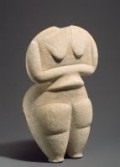 There are many histological and physiological changes that occur in lipedema. There is a decrease in the elasticity of the skin and underlying connective tissue. The basement membrane of blood vessels is thickened and there are disturbances in vasomotion. There is decreased vascular resistance, increased skin perfusion, and increased capillary filtration. There is increased venous/blood capillary pressure causing increased ultrafiltration.
There are many histological and physiological changes that occur in lipedema. There is a decrease in the elasticity of the skin and underlying connective tissue. The basement membrane of blood vessels is thickened and there are disturbances in vasomotion. There is decreased vascular resistance, increased skin perfusion, and increased capillary filtration. There is increased venous/blood capillary pressure causing increased ultrafiltration.
These vascular changes combined with the decreased efficiency of the calf muscle pump, result in both the dependent pitting edema seen in Stage I, as well as the the secondary lymphedema that often complicates lipedema in its later stages. Histological changes seen in lipedema include a thinning of the epidermal layer, thickening of the subcutaneous tissue layer, fibrosis of arterioles, tearing of elastic fibers, dilated venules and capillaries, and hypertrophy and hyperplasia of fat cells. Clinical studies show that there is enlargement of the pre-lymphatic channels (Stoberl et al., 1986) as well as defects in capillary perfusion (Weinert and Leeman, 1991).
Some authors have reported no alteration in lymphatic transport (Brautigam et al., 1998) while others (Bilancini et al., 1995) have reported decreased lymph outflow in those individuals with lipedema. Foldi and Foldi (1993) reported an increase in fat cell growth during lymphostasis.

